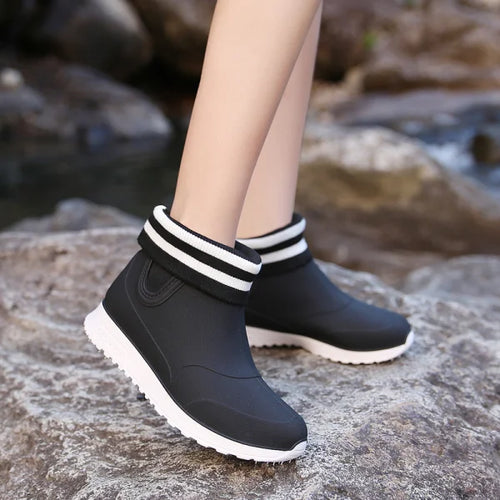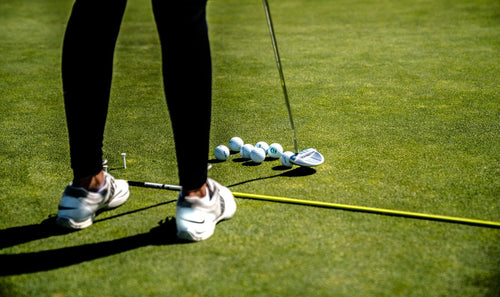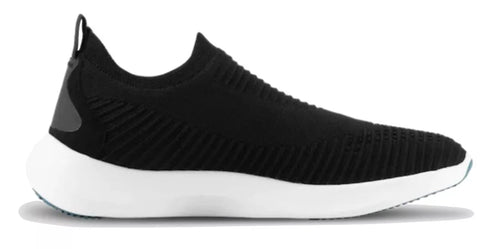Boats can be unsteady and rocky. That’s why you need a good pair of waterproof footwear to keep you stable, even against the unpredictable big blue.
Just like most other sports, sailing has its dedicated footwear. Not only do these specialized shoes keep you safe and optimize your performance, but they also keep your sailing vessel free from scratches and stains.

Now, we know what you might be thinking: apart from water resistance, what is so special about sailing shoes? It’s not like you have to do a lot of walking or running, anyway.
But you’ll be surprised how different boating shoes actually are.
So, let’s set sail and look at the best waterproof footwear to keep you well-grounded- even on the sea.
What Makes For Good Boating Shoes
Sailing shoes have come a long way since the classic Sperry Top-Siders. These days, seafarers can choose from a diverse selection of comfortable, stylish, and, most importantly, functional sailing footwear.
But what exactly makes for functional boating shoes?
Grip
Losing your footing on a boat can be fatal. So, traction should be your top-most priority when it comes to boat shoes. Whether you’re on dry or wet surfaces, your soles should keep you upright and sure-footed.
However, heavy lugs such as those found in hiking shoes aren’t the most appropriate for the sea.
Instead, your safest bet is a shoe that uses a high-quality grip material (such as Vibram) with a minimal tread pattern. This type of tread ensures that there is maximum contact with the ground, and a little siping here and there reinforces superior traction.
Waterproof
Sprays and splashes of seawater are inevitable. So, if you want a sailing shoe truly worthy of the sea, you must get on board with waterproof footwear- not water-resistant or water-repellent, but fully waterproof.
Additionally, the shoes should also be quick-drying. Should your shoes get drenched, you'll compromise your comfort, stability, and, ultimately, safety.
Material
Traditionally, a leather upper was typical for deck shoes. Thanks to its natural water resistance and durability, leather was the most sensible choice for the high seas.
However, leather isn’t your only option. And with the recent advancements in the footwear industry, it might not be the best option, either.
While initially water-resistant, leather can succumb to moisture very quickly. Additionally, leather isn’t non-staining, which means that once it gets wet, it will have water spots. Moreover, leather boat shoes aren’t as flexible and versatile as their non-leather counterpart.
These days, you can go for pretty much any material as long as it’s water and stain-proof. Additionally, the material should be breathable to counter the heat of the beating sun.
Non-Marking Soles
While you may not always notice it, a lot of stiff rubber soles leave behind a mark on whatever surface they contact. The stains are much more noticeable on surfaces such as hardwood floors. Unfortunately, your deck isn’t safe, either.
To prevent the unsightly appearance of dark stains on your deck, you need a non-marking rubber sole. Usually, this is specified in the product descriptions. If it’s not specified anywhere, then the shoes are probably not non-marking.
Additionally, non-marking soles are also automatically more flexible since the material is less stiff and hard.
Top 5 Seaworthy Waterproof Footwear for Sailing
As we saw, the best waterproof footwear for your nautical adventures must be comfortable, stable, quick-drying, non-marking, and breathable. Here are some top-notch sailing shoes with all of these qualities and more.
|
|
Sperry Crest Boat |
Loom Waterproof Sneakers |
Astral Brewer 2.0 |
Aleader XDRAIN |
Dockers Vargas Boat Shoe |
|
Waterproof |
Water-resistant seersucker upper |
100% waterproof, Mesh upper
|
Water-resistant |
Water-resistant, drainage ports in the outsole |
Water-resistant leather upper |
|
Breathability |
Medium |
High |
High |
Medium |
low |
|
Flexibility |
High |
High |
High |
Medium |
Medium |
|
Grip |
Non-stiff rubber outsole |
Vibram Outsole |
Razor-siped rubber outsole |
Strategic rubber reinforcement |
Thin rubber outsole |
|
Price |
$59.95 |
$99 |
$110 |
$45.99 |
$59.99 |
Also read: Waterproof Vs Water Resistant Shoes - What’s The Difference?
Sperry Crest Boat Sneaker-Boat Shoe Hybrid
A variant of the classic Sperry Top-Sider leather loafers, these sneaker-boat shoe hybrids are as functional for the docks as they are stylish for some casual dining.

The Crest Boat Shoes were visibly inspired by the original Top-Sider loafer design. However, the sneaker variations are apparent; there’s a lot more sole to these shoes.
All that extra space between the insole and outsole leaves that much room for added cushioning. Traditional boat shoes often disregard cushioning since there isn't much use for it on the deck. Instead, sailors liked to keep their boat shoes and their walking shoes separate.
However, it’s all about versatility in the footwear industry today.
Therefore, the added cushioning turns out to be very useful for all-day, all-surface, all-activity purposes. Whether you’re manning the sail, basking on the deck, or walking around on the docks, these sneakers-boat hybrid shoes will keep you comfortable by minimizing ankle soreness.
But that’s not where the comfort ends.
The Crest Boat Shoes features a lightweight seersucker upper. The seersucker is an airy cotton fabric woven together using a special weaving process. This type of weaving allows the material to be even more summer-friendly than regular cotton.
Loom Waterproof Sneakers
These days, hundreds of shoes are marketed as “waterproof,” yet only a few deliver on this promise. Luckily, Loom Waterproof Sneakers are among the more reliable waterproof footwear.

Not only does Loom offer a completely waterproof shoe, but it guarantees a windproof one as well. While wind is a good thing for your sail, it can be extremely unforgiving to your feet. Protection against the elements, however, is a given with these top-quality sneakers.
But do these shoes protect your deck just as well as they protect your feet?
Usually, running shoes don’t concern themselves with using non-marking outsoles because they’re meant to be worn on concrete or unpaved roads.
Loom, however, does use non-marking Vibram for their outsoles. This adds to their versatility so that you can wear these sneakers on roads, tennis courts, or even sensitive hardwood surfaces.
Additionally, the outsoles benefit from Vibram’s high-grade traction. The non-aggressive tread pattern coupled with the characteristic Vibram grip makes it perfect for boats; not only will the shoes spare your deck, but they will also provide you with a superior grip on the slick, slippery surface.
Astral Brewer 2.0 Water Shoes
Even though we’ve already talked about a cult-favorite sneaker-boat shoe hybrid, the Astral Brewer 2.0 deserves a shoutout. Surely, its high-quality upper, super-sticky rubber outsole and waterproof construction justifies its spot on this list.

The Brewer’s upper is meticulously crafted using a strategic combination of hydrophobic canvas and air mesh. This clever combination maximizes both water resistance and breathability without compromising on the other. In fact, Astral went the extra mile and included water-resistant laces to ward off any excess moisture.
Unlike its competition, the Astral Brewer 2.0 Water Shoes are the only waterproof footwear in our list that boasts a razor-siped outsole. Siping maximizes traction without minimizing surface area contact.
In comparison with those rugged deep-lug soles typical in hiking or trekking footwear, siped soles provide the same level of traction without the threat of damage to the surface.
Another thing to notice about these shoes is their medium arch. This feature is especially useful for people with high arches; it provides the same level of stability as a low-arch shoe but isn’t so high that it makes your ankle roll.
Aleader XDRAIN Water-Friendly Shoes
The Astral XDRAIN Shoes give new meaning to waterproof footwear. While they may not be the most resistant to water, these water shoes are unbelievably quick-drying.

The most determining aspect of a shoe is its upper. Thankfully, Aleader knew exactly what it was doing with these hydrophobic yet breathable shoes. Because of the knit upper, the XDRAIN shoes are well-ventilated, odor-repellent, and moisture-wicking.
Additionally, the upper is exceptionally lightweight, leaving room for some cool features elsewhere in the shoes.
This brings us to the real show-stopper: the titular XDRAIN water drainage system.
The Aleader XDRAIN Shoes uses a specialized FuildFlow Technology to allow for water drainage. Basically, the soles have drainage ports from where water can flow out. So, if a rogue wave oversaturates your shoes, the water has a quick and easy way out instead of taking hours to evaporate.
Another useful feature is the strategic traction in the outsoles. Rubber pads around the areas where you typically apply most pressure (the heels and forefoot) help prevent slips and falls. This way, you’re minimizing the most common safety hazard that comes with sailing.
Dockers Vargas Boat Shoe
If you want to go for the classic TopSider design but don’t want to spend as much money, then the Dockers Vargas is a great dupe.

Featuring a genuine leather upper with a hand-sewn construction, the Vargas Boat shoes are durable as well as flexible. Moreover, the leather puts up quite a fight against water splashes. Not only that, but even the rubber outsole resists water penetration from below.
But that’s not all the outsole is good for.
The durable, non-marking outsole material offers high-grade traction while protecting your deck. Additionally, the soles are flexible enough to take the pressure off your ankles are other joints.
But while these thin-soled flexible shoes might not look it, they actually pack quite a bit of cushioning in their footbed. Specifically, the Vargas Boat shoes utilize the beloved EVA midsole for softness, flexibility, and exceptional comfort.
The Vargas Boat Shoes stick with the classic Sperry 360-degree lacing system. This type of fastening using one shoelace around the entire shoe- kind of like a drawstring. Using this, you can adjust the shoe even around your ankles.
Conclusion
Waterproof footwear is integral to your sailing gear. As we discussed, bad shoes might take the wind out of your sail.
Without the right type of shoes to accompany you on your sailing adventures, you risk compromising your performance. On the other hand, spending a little extra money on specialized sailing shoes will surely be worth it.
So, don’t trim your sails when it comes to shoes- they’re just as important as your other gear.

























